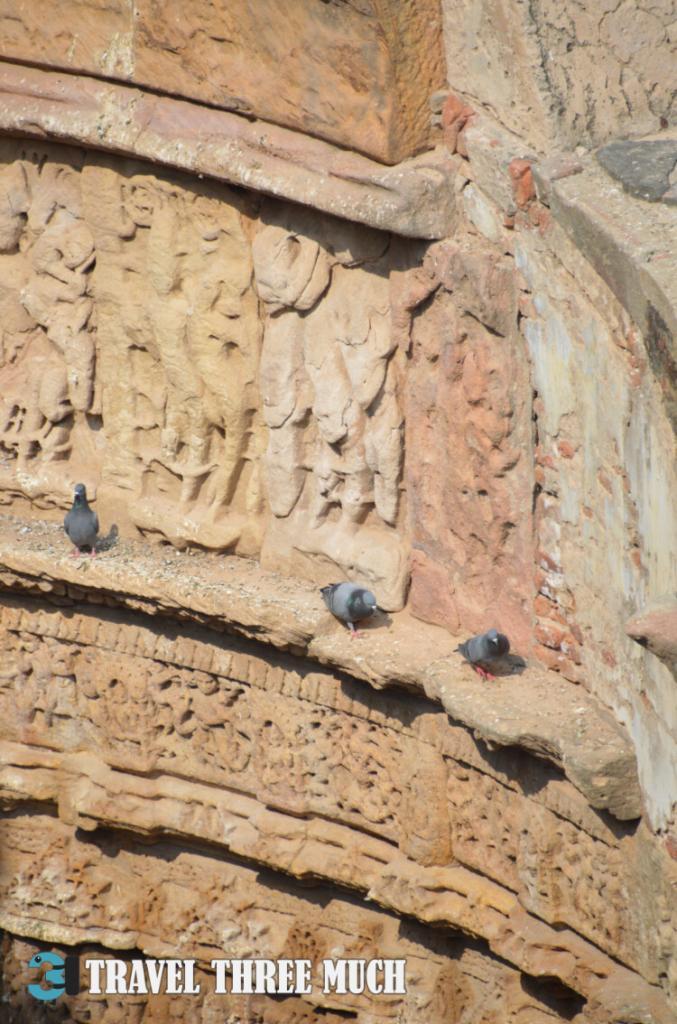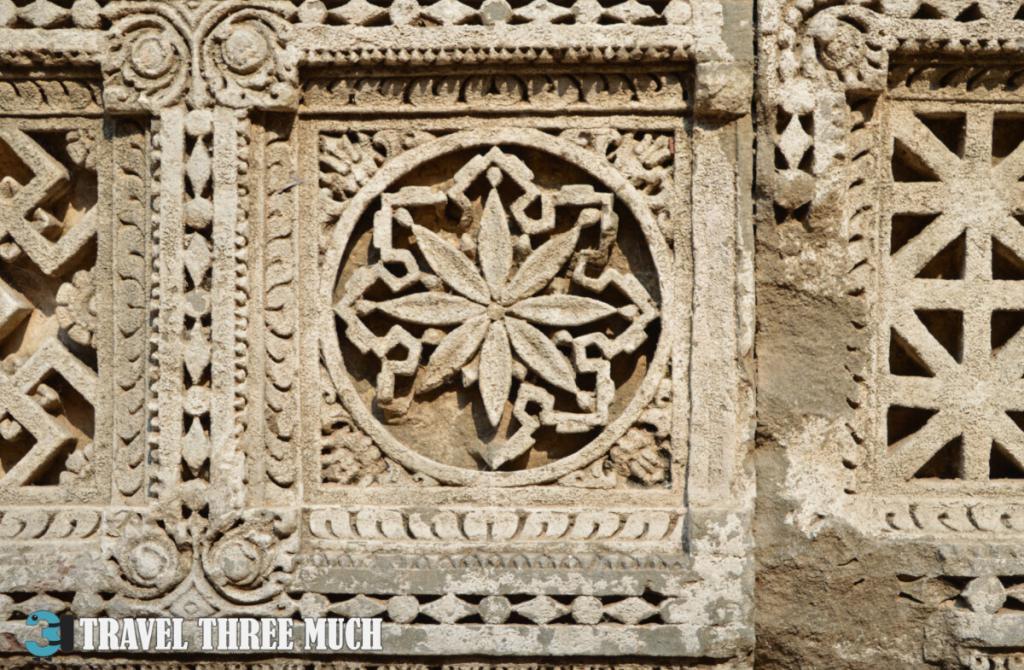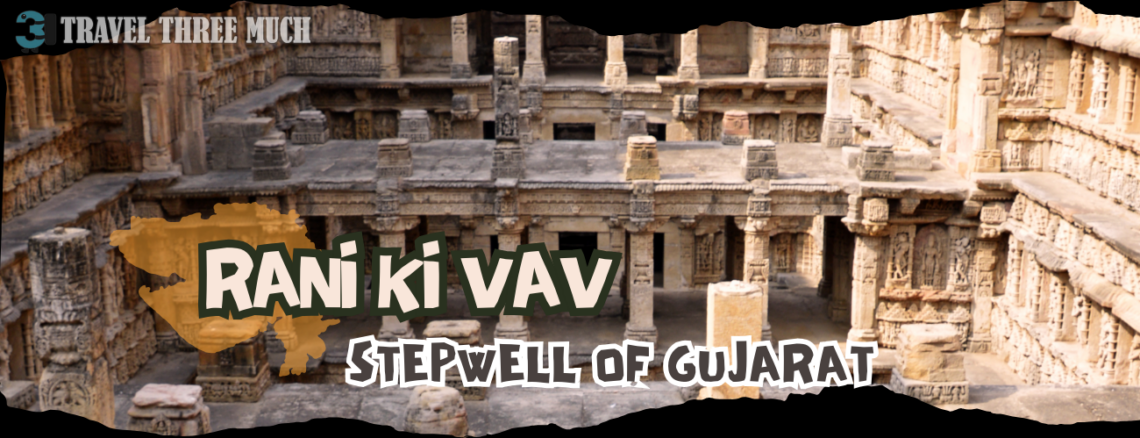
Stairway to Wonder: Exploring Rani Ki Vav
Rani ki Vav had been in our bucket list for a few years now. Not only because it is an UNESCO heritage site, but also because, the concept of a step well was truly intriguing. All we knew was we wanted to see this place but did not know much about its history. Unlike many of our other trips where we read up on the place we plan to visit, that month being crazy busy on the work front, we really did not get to it.
We visited Ahmedabad in the winter of 2023. Based on the reviews, we chose a day in the start of the wee. This was to ensure there wouldn’t be too much of a crowd, being Christmas holidays season and all.
History of Rani Ki Vav
In the town of Patan in Gujarat, one of the largest examples of step wells in India – Rani Ki Vav, or the Queen’s Stepwell is situated. The ‘queen’ refers to the Chalukya queen Udayamati, who commissioned the stepwell in memory of her husband, King Bhima I. That’s right – it’s not just Shah Jahan who built a humongous monument for his wife. There are women out there who’ve also built amazing intricate architectural marvels for their husbands. And these have utility too. (But, I mean, not comparing!!)
The Step well – the splendor and the glory
The construction of the stepwell took 20 years to complete and the result is nothing short of breathtaking. The unique aspect of this stepwell is that, the construction is in the form of an inverted temple. As you walk into the monument, all you see is some people walking around the lawn. The complex is totally hidden from view at the ground level.
There is no hint of the scale of the structure until you reach the entrance.

The compound with the step well has a fence with walkways around the well and lawns on which people were relaxing.
As we descended the set of stairs to the first level, not only the scale of the step well but also the intricate details on the walls and pillars came into view.
A panel had a series of deities from the Hindu mythology of the Dasavathara or the ten incarnations of Vishnu. There were also panels of motifs that are traditionally used in the Patola sarees from Gujarat.
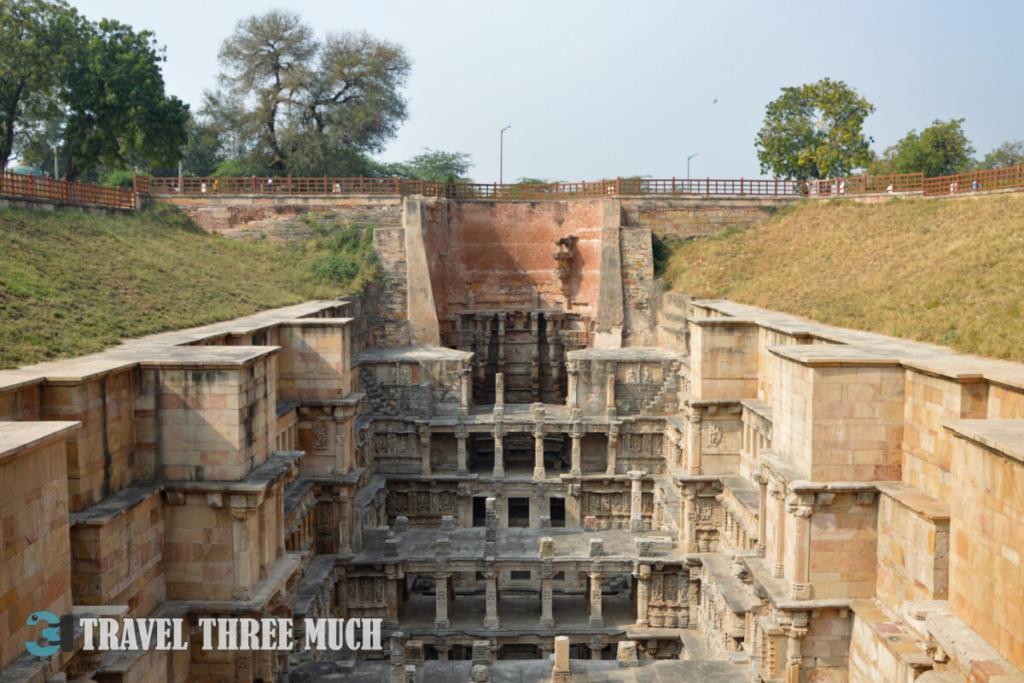
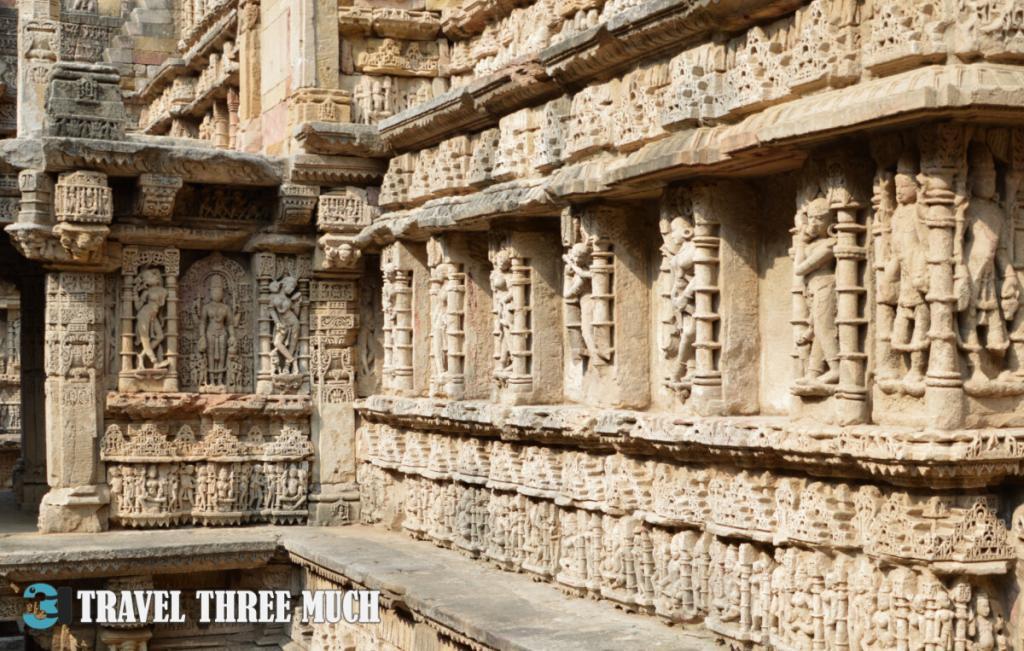
Getting around Rani Ki Vav
It was midday when we visited and the sun was quite harsh. Yet, just a few levels into the stepwell, it was noticeably cooler already.
Every pillar seemed to have a different pattern or tale sculpted on it. The array of themes were truly mind-boggling. We saw Hindu deities, both male and female such as a Mahishasuramardhini, celestial nymphs and demons. There were also secular motifs such as plants, decorative items, hunting scenes, animals and scrolls.
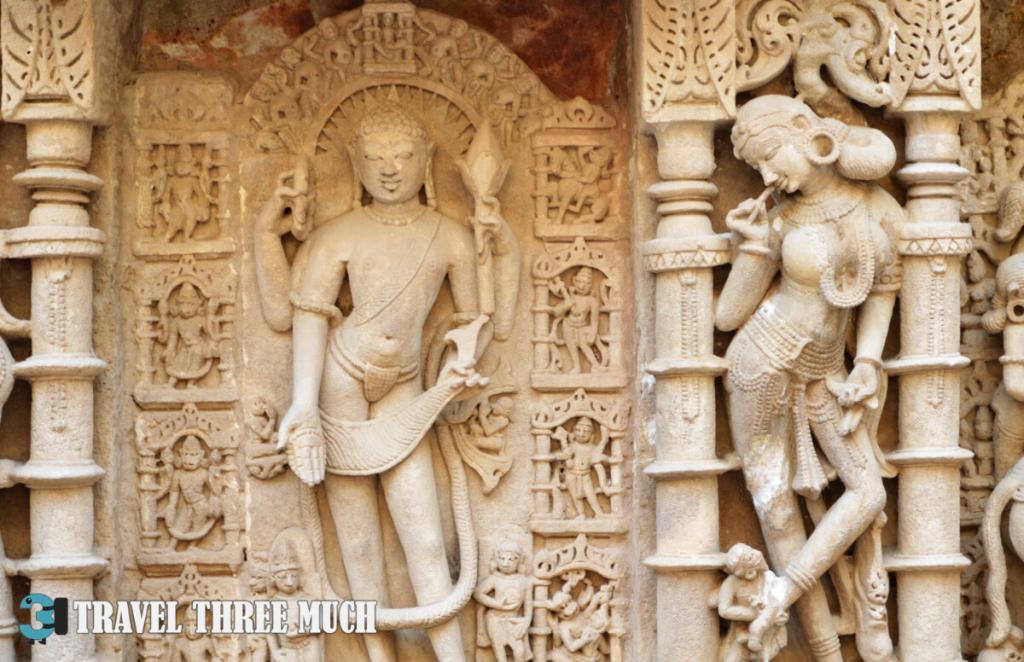
As we descended the next levels, one thing became clear to us.
The artisans must’ve reached the pinnacle of their skill in working with sandstone.
The pillars that support the roofs and beams have intricately carved filigrees. These mask a solid core which takes care of the load bearing. Carved flying beings capping the pillars serve as the connecting brackets between the beams and the pillars.

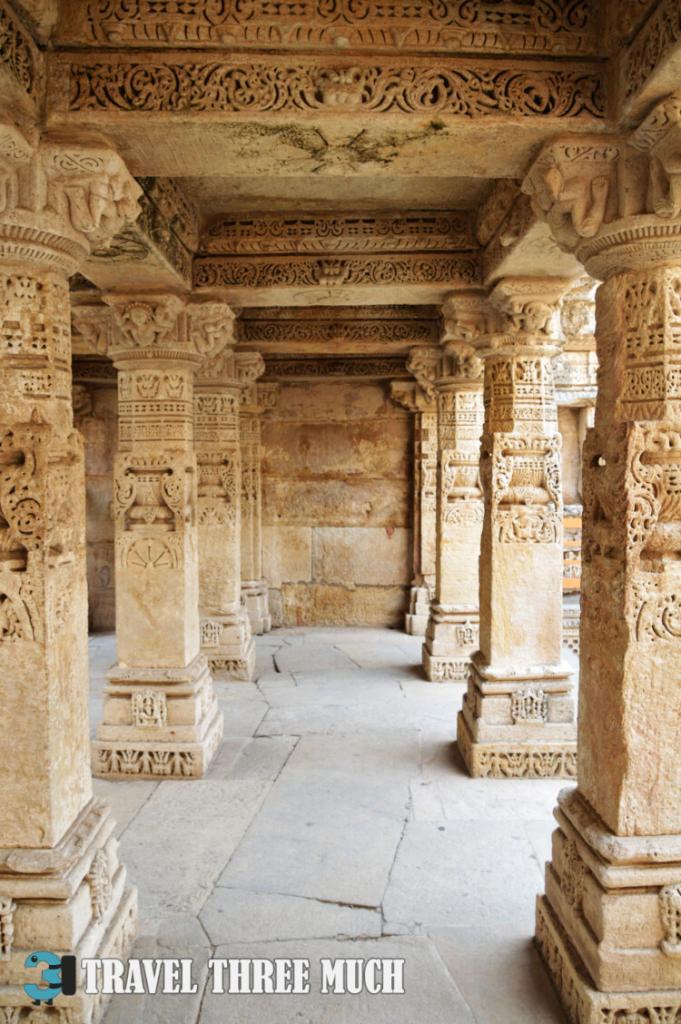
The sanctum
The sanctum seems to have an image of a reclining Vishnu. We couldn’t see quite clearly because of the great distance. Only glimpses of the deity were visible through the slots in the surrounding walls.
We saw some brackets in the far walls which we wanted to get a closer look at. After taking in the sights at the underground levels, we climbed the steps back up. It strolled on the walkway to near the rearmost walls. From here, the ruined brackets and even more decorative panels with further deities and other motifs were clearly visible.
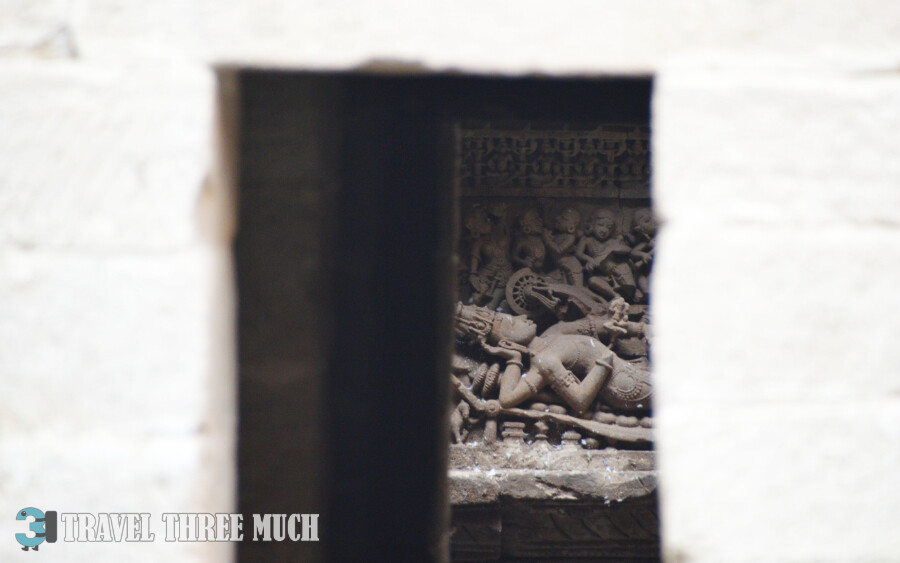
Parakeets, mynahs and the ubiquitous pigeons inhabit the spaces inside the step well. And only these would be able to see the vast cavernous interiors and all the sculptures. We left this homage of a queen to her beloved husband wondering about the heady mix of practical altruism and worship of the divine thrown in.

